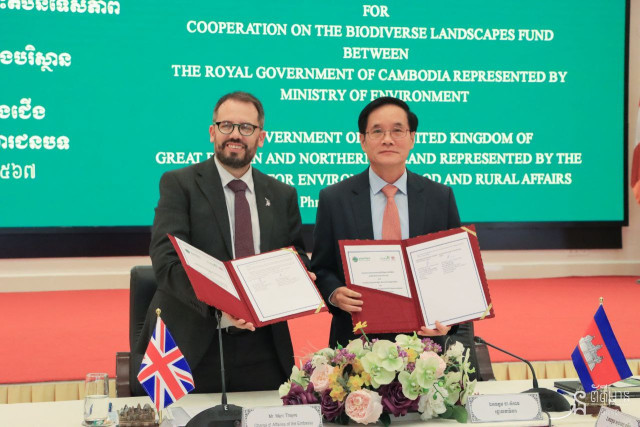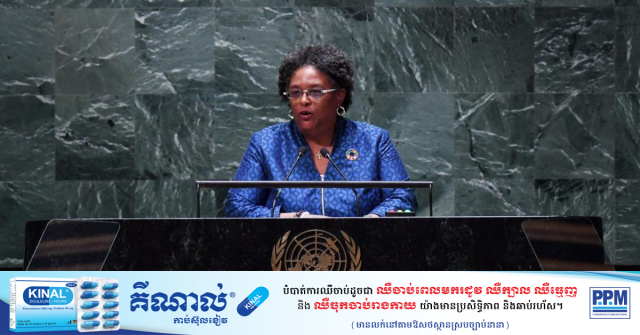Cambodia-UK Sign Environment and Livelihoods Pact

- By Te Chhaysinh
- June 16, 2023 9:03 AM
PHNOM PENH – Cambodia and the UK have signed a Memorandum of Understanding on Britain’s Biodiverse Landscape Fund (BLF), an initiative to support work on poverty reduction, protect biodiversity and address climate change.
Implementation of the fund will start this year through partners working with the Cambodian Government. The MoU was signed on June 15.
Chea Samnang, Secretary of State of the Ministry of Environment, said the ministry was pleased to have the formal partnership with the UK.
‘’Improved livelihood of the local community is one of the top priorities of the Royal Government of Cambodia while sustaining biodiversity and natural resources for the generations to come in cooperation with the relevant partners,” he said.
Samnang hoped the fund would support the effective and sustainable management of biodiversity hotspots and improve community living conditions in the target areas through protected area land registration and zoning, green finance, capacity building and education.
Marc Thayre, charge d'affaires of the British Embassy in Phnom Penh, said he was happy to collaborate with Cambodia as climate change doesn’t have boundaries and strong partnerships are essential to protecting the environment.
“BLF will be an important mechanism for supporting local communities to strengthen biodiversity conservation, reduce poverty and build resilience to climate change. This work will complement our existing Darwin Initiative and IWT Challenge Funds," he said.
The Lower Mekong landscape was chosen for the BLF program due to its global importance for biodiversity, its potential as a carbon sink and the resident populations' economic and livelihood needs.
Between 2023 and 2029, the BLF will invest up to $19 million in the Lower Mekong landscape, which includes Cambodia, Laos and Vietnam.
The BLF program in the Lower Mekong aims to provide communities dependent on and living in environmentally important landscapes with long-term landscape protection, sustainable management and restoration, biodiversity protection and upkeep and improvement of ecosystem quality.















